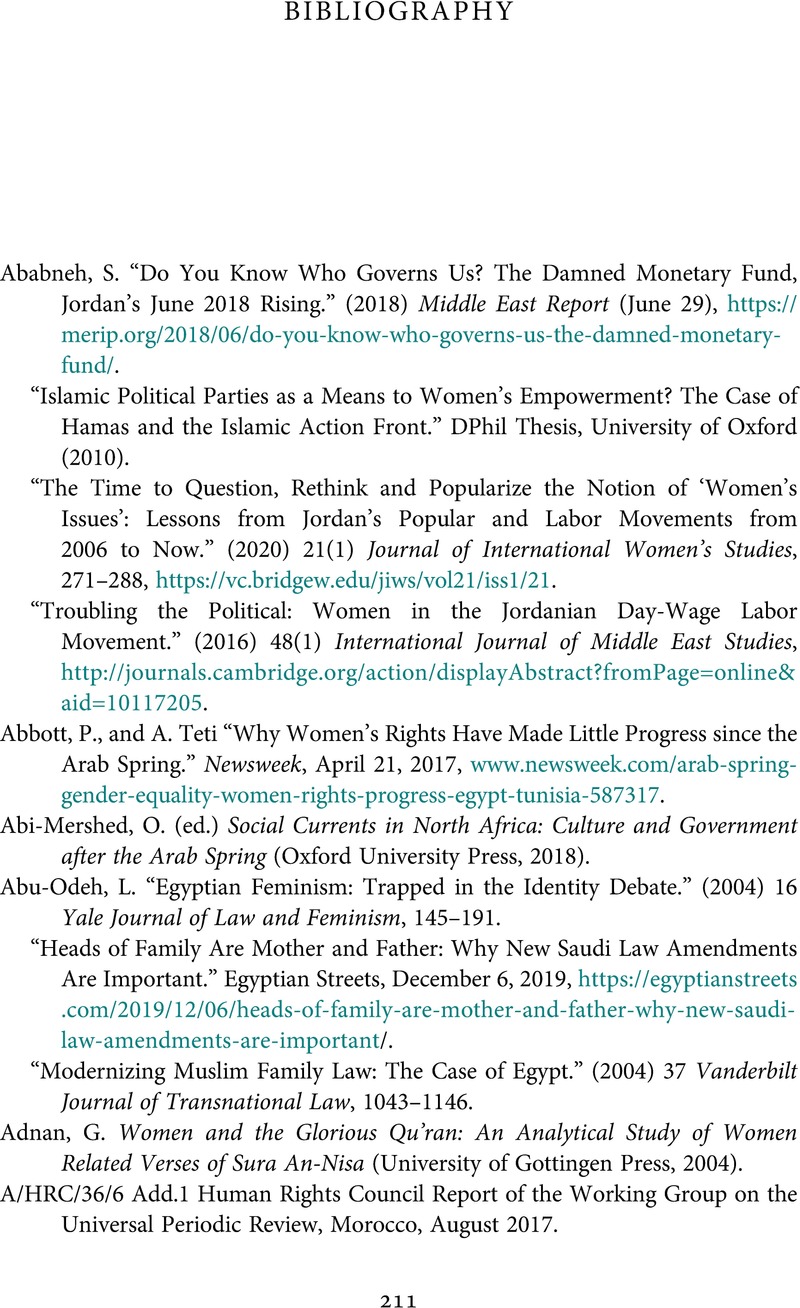Book contents
- Family Law and Gender in the Middle East and North Africa
- Family Law and Gender in the Middle East and North Africa
- Copyright page
- Contents
- Contributors
- Acknowledgments
- Introduction
- 1 Sustained Reforms
- 2 Family Law in Egypt
- 3 Women’s Rights in the Moroccan Family Code
- 4 Postponing Equality in the Algerian Family Code
- 5 Juristic and Legislative Rulemaking
- 6 The Status of Muslim Women in the Mosaic of Islamic Family Law in Lebanon
- 7 In Circles We Go
- 8 The Palestinian Minority in Israel
- 9 West Bank and Gaza Personal Status Law
- 10 Qatari Family Law, When Custom Meets Shari′a
- Glossary
- Bibliography
- Index
- References
Bibliography
Published online by Cambridge University Press: 18 May 2023
- Family Law and Gender in the Middle East and North Africa
- Family Law and Gender in the Middle East and North Africa
- Copyright page
- Contents
- Contributors
- Acknowledgments
- Introduction
- 1 Sustained Reforms
- 2 Family Law in Egypt
- 3 Women’s Rights in the Moroccan Family Code
- 4 Postponing Equality in the Algerian Family Code
- 5 Juristic and Legislative Rulemaking
- 6 The Status of Muslim Women in the Mosaic of Islamic Family Law in Lebanon
- 7 In Circles We Go
- 8 The Palestinian Minority in Israel
- 9 West Bank and Gaza Personal Status Law
- 10 Qatari Family Law, When Custom Meets Shari′a
- Glossary
- Bibliography
- Index
- References
Summary

- Type
- Chapter
- Information
- Family Law and Gender in the Middle East and North AfricaChange and Stasis since the Arab Spring, pp. 211 - 241Publisher: Cambridge University PressPrint publication year: 2023



